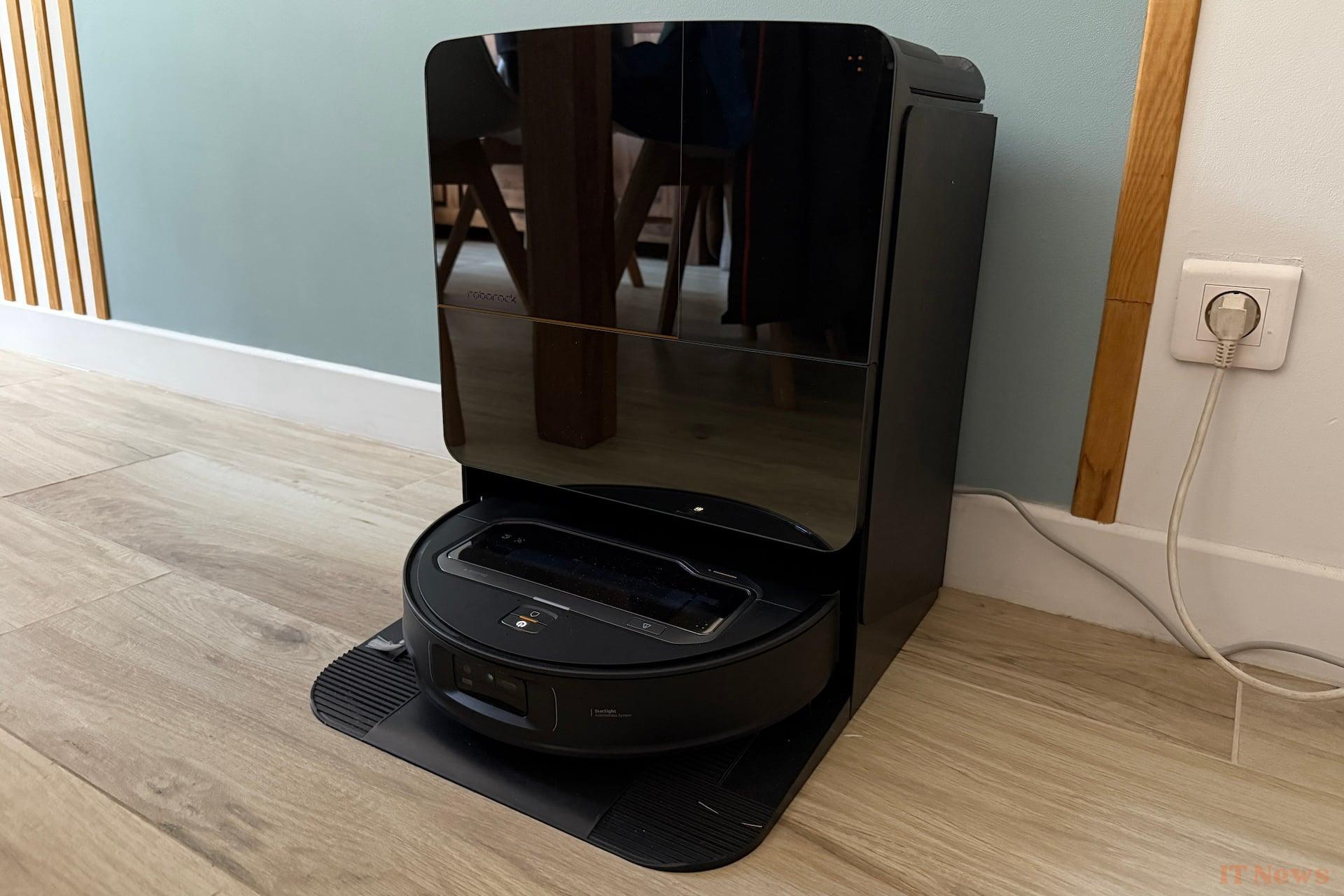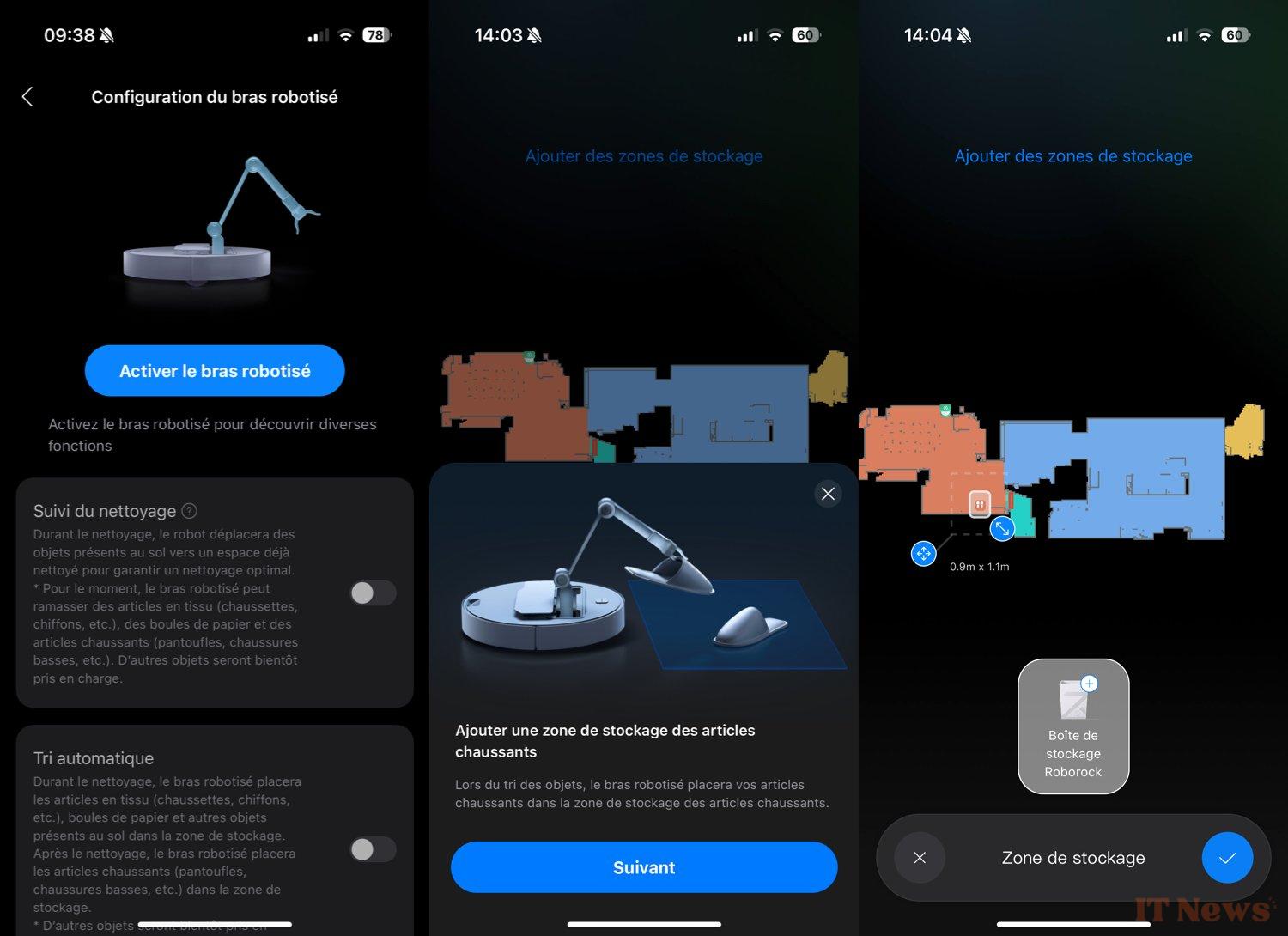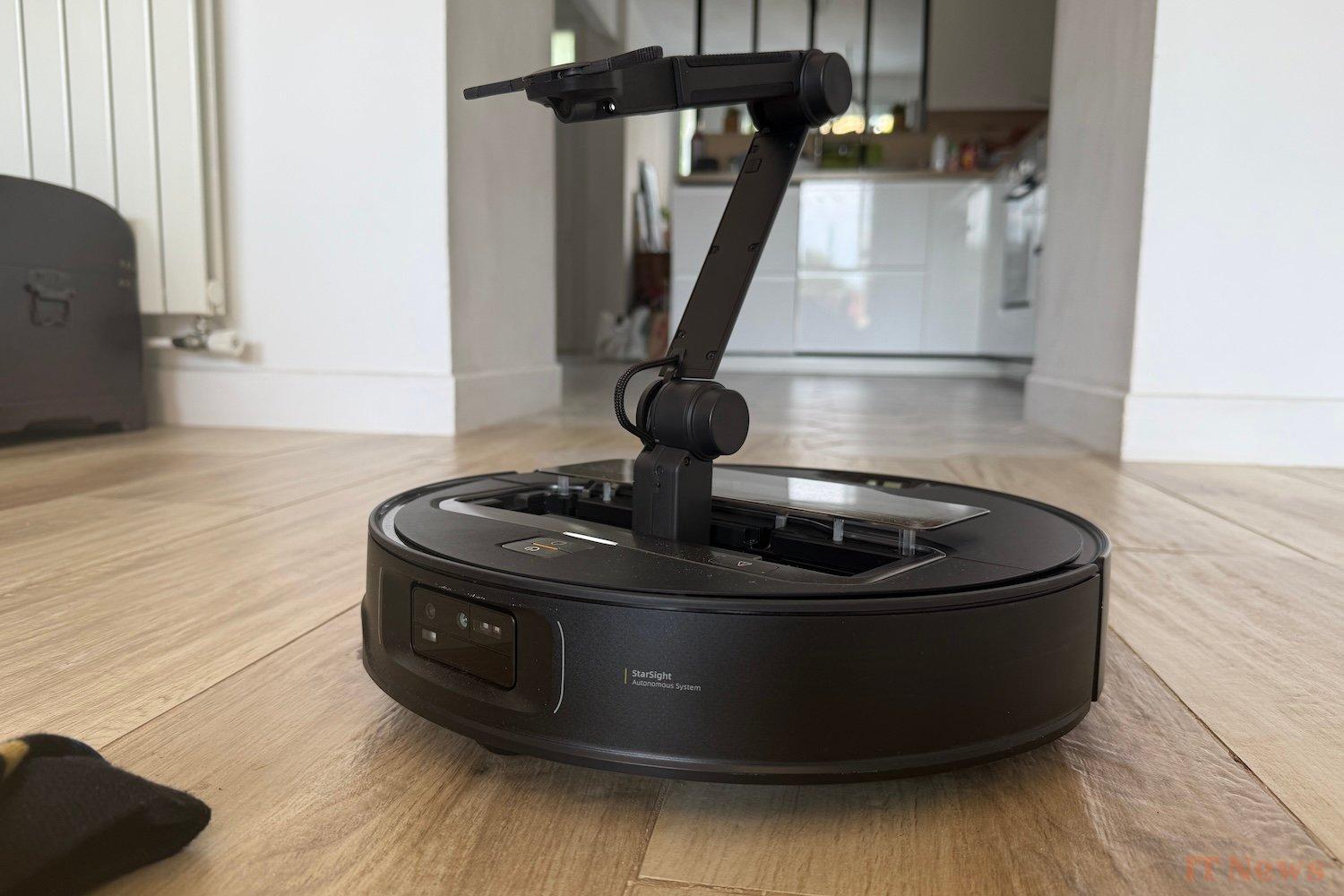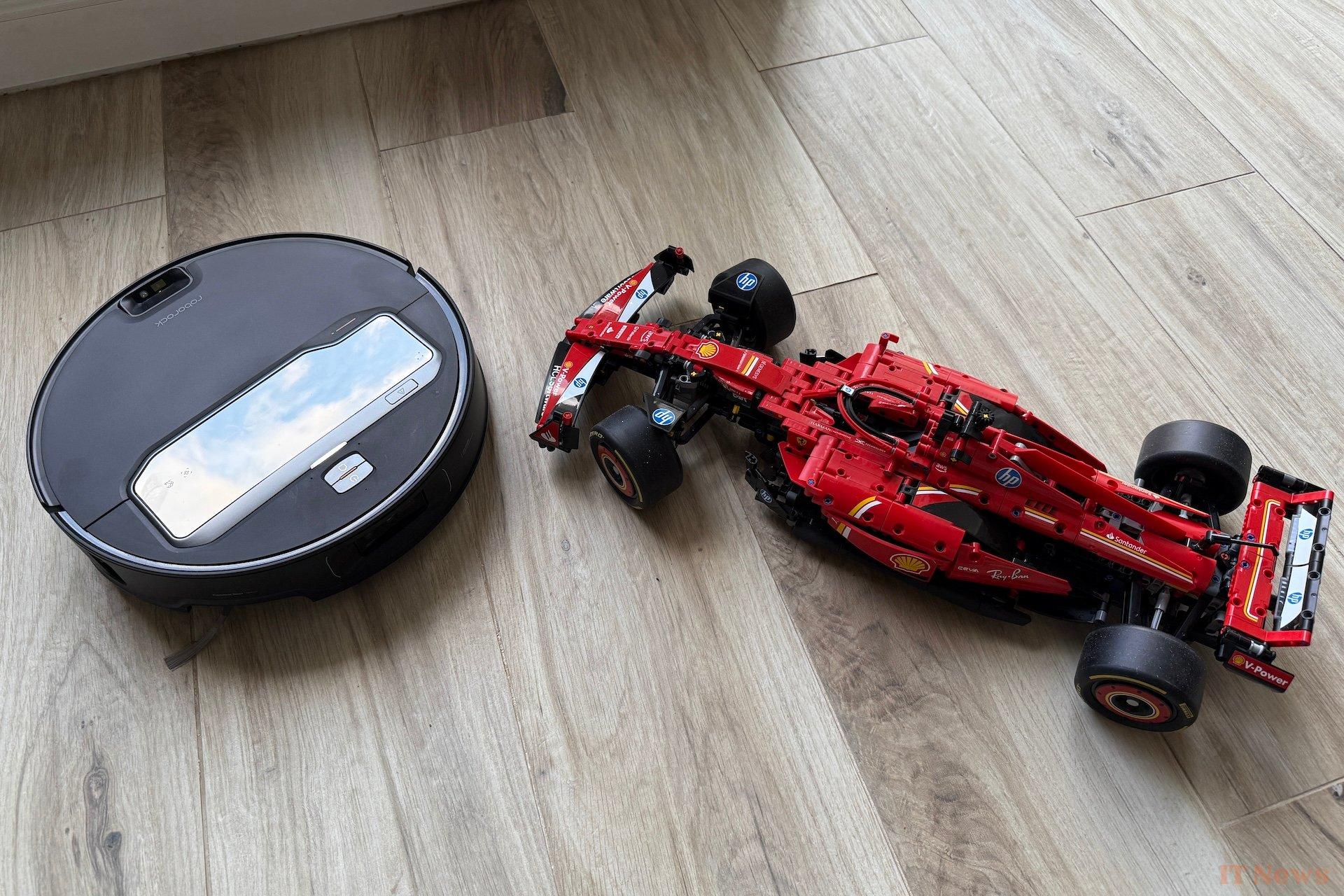It's undoubtedly the most advanced robot vacuum cleaner on the market. It's also the most expensive. While it's dangerously close to €2,000, the Roborock Saros Z70 boasts an asset that's as original as it is fascinating: an integrated robotic arm. Its promise: to pick up small objects (up to 300g) that it encounters, put them away, and clean virtually everywhere. After making waves at CES in Las Vegas earlier this year, has Roborock's brand new robot vacuum managed to impress our lab?
Just a clarification: a first article on the operation and performance of the robotic arm was published a few days ago. This appetizer is not strictly speaking a test, but it focuses on the most innovative aspect of the robot and undoubtedly what makes it stand out the most. Also, during this test, we will regularly refer you to this first article, which we strongly recommend you read to understand all the work carried out by Roborock engineers.
A feat of engineering and design
At first glance, nothing distinguishes the Saros Z70 from a conventional robot vacuum cleaner. Moreover, apart from a slightly higher docking station, from a distance, it could be mistaken for the very latest Saros 10 that we just tested. It is when approaching the beast that we discover a curiosity never before seen on a robot vacuum cleaner: a hatch closed by smoked glass which hides a robotic arm.
This is capable of unfolding like the arm of a crane, moving on three axes and activating the gripper at its end to grab various objects. Rather than revisit its capabilities, which were the subject of a separate article, we'll highlight its build quality and integration here. While it has everything going for it, this accessory never feels like a cheap one. Despite its limited power for objects weighing 300g, the arm feels solid, carefully articulated, and precise in its movements. Finally, we can't help but admire its integration, even if its speed won't blow the crowds away.
Installation and Getting Started
Adding an articulated arm doesn't change much when it comes to setting up the Saros Z70. If you've ever opened the box for a robot vacuum, the process is essentially the same. Install the docking station, plug it in, download the Roborock app, connect your robot vacuum to your home Wi-Fi network, and start mapping. It's all classic, in short. The Chinese manufacturer has taken such pains not to disrupt user habits that the robotic arm is disabled by default. To use the Saros Z70, you need to unlock this capability in the dedicated menu on the app.
Vacuuming and cleaning: among the most reliable
While the Saros Z70's robotic arm makes it unique, the rest of its components are very similar to the Saros 10 that we tested a few weeks ago, and to the Saros 10R, the other almost similar model announced at the same time by Roborock. As a result, the suction and washing performance of the Z70 is very close to what we saw during our test of the Saros 10.
If we had to summarize them, we could stop at the title of this test: "one of the best robot vacuum cleaners of the moment." To put it more clearly, the Z70, like the Saros10, is very comfortable with a suction power of 22,000 Pa, which places it among the most powerful on the market. It can also rely on a new type of double brush, which prevents the tangling of hair and other hairs in particular. In this respect, it is a real leap forward compared to previous generations of robot vacuum cleaners which required long and tedious maintenance on this point. Finally, unlike the Saros 10 which found this to be a limitation, the Z70 can rely on a small side brush (FlexiArm Riser in Roborock language) capable of stretching out to pick up dust strayed from corners.
On the mop side, however, we are at the same level of efficiency even if The Z70 opts for a double rotating mop. In this respect, it is at the same level as the best, but like them, it does not work miracles against stubborn or dried-on stains.
On the other hand, the Saros Z70 did not always impress us with its navigation capabilities. While it has the same spatial awareness system as the Saros 10 and the same sensors, the StarSight 2.0 system seemed a little less effective on Roborock's most innovative robot vacuum cleaner. Unlike the Saros 10, the Z70 found itself tangled between the legs of a chair or under a sofa a few times. On the other hand, it proved particularly impressive at getting around objects scattered on the floor to disorient it, including cables, which it managed to avoid most of the time. Therefore, these few failures are all the more surprising, but they in no way diminish the intrinsic qualities of this cleaning companion.
Maintenance: the benchmark in its category
As with the Saros 10, the Saros Z70 is the proof that Roborock excels in the maintenance part. This is more specifically devoted to the docking station which is responsible for picking up the robot, emptying it, cleaning its mops and even drying them at low temperature once its task is finished. It's simple, to the extent that there is no longer even any need to go hunting for tangled hair: the Saros Z70 now only requires occasional interventions, to replace the waste water and renew the clean water or simply for its general maintenance.
This was the initial promise of its docking stations and it is clear that it took a few years for the most efficient ones, such as those of the Saros 10 and the Z70, to reach the expected level. It now remains to improve on the noise pollution part, because despite all the robot's efforts to remain silent, its maintenance never goes unnoticed.








0 Comments